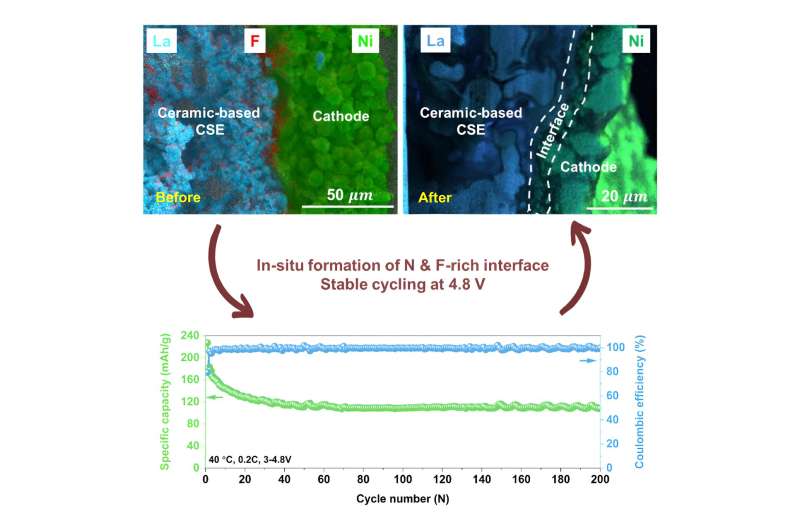
October 2, 2024 by Claire Loewen, McGill University
Collected at: https://techxplore.com/news/2024-10-key-barrier-safer-efficient-ev.html
Researchers at McGill University have made a significant advance in the development of all-solid-state lithium batteries, which are being pursued as the next step in electric vehicle (EV) battery technology.
By addressing a long-standing issue with battery performance, this innovation could pave the way for safer, longer-lasting EVs. The findings are published in the journal Cell Reports Physical Science.
The challenge lies in the resistance that occurs where the ceramic electrolyte meets the electrodes. This makes the battery less efficient and reduces how much energy it can deliver. The research team has discovered that creating a porous ceramic membrane, instead of the traditional dense plate, and filling it with a small amount of polymer can resolve this issue.
“By using a polymer-filled porous membrane, we can allow lithium ions to move freely and eliminate the interfacial resistance between the solid electrolyte and the electrodes,” said George Demopoulos, Professor in the Department of Materials Engineering, who led the research.
“This not only improves the battery’s performance but also creates a stable interface for high-voltage operation, one of the industry’s key goals.”
Current lithium-ion batteries rely on liquid electrolytes, which pose safety risks due to their flammability. All-solid-state batteries aim to replace liquid components with solid ones to improve safety and efficiency. This new design offers a novel way to overcome one of the key barriers to making all-solid-state batteries a reality for the EV industry.
“This discovery brings us closer to building the next generation of safer and more efficient batteries for electric vehicles,” said first author of the study and Ph.D. graduate in the Department of Materials Engineering Senhao Wang.
More information: Senhao Wang et al, 4.8-V all-solid-state garnet-based lithium-metal batteries with stable interface, Cell Reports Physical Science (2024). DOI: 10.1016/j.xcrp.2024.102213
Journal information: Cell Reports Physical Science

Leave a Reply